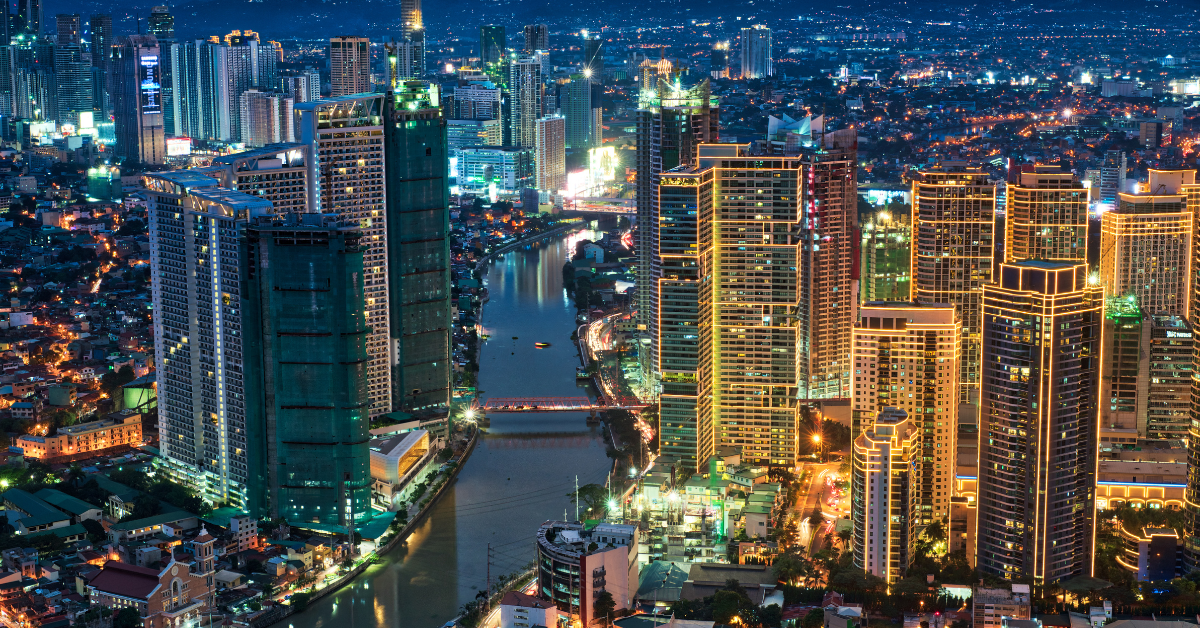Manila, the capital of the Philippines, is written in Katakana in Japanese, while in Chinese it appears as “马尼拉.” This difference reflects not only linguistic conventions but also cultural backgrounds. For Japanese people, Manila is a city associated with tourism, safety concerns, business opportunities, and sports. Exploring these perspectives helps us understand why Manila leaves such a complex impression.
Does Manila Have a Chinese Character Notation?
In Japanese, Manila has no official kanji notation. It is written in Katakana as “マニラ.” However, in Chinese, it is common to adapt foreign place names phonetically into Chinese characters, resulting in “马尼拉 (Mǎnílā).”
Historically, Japan also used kanji to represent foreign place names. Examples include “亜米利加” (America) and “英吉利” (England). These were phonetic transcriptions rather than literal translations. Today, however, foreign place names are almost always written in Katakana, and Manila is no exception.
| Language | Notation |
|---|---|
| Japanese | マニラ |
| Chinese | 马尼拉 |
| English | Manila |
While the notation is simple, it reflects cultural and historical differences in language usage.
The Image Japanese People Have of Manila
Japanese impressions of Manila vary widely depending on the context—tourists, business professionals, or sports fans may all see the city differently.
Manila as a Tourist Destination
Manila is known as the gateway to the Philippines. Attractions such as Intramuros, the old walled city from Spanish colonial times, and the famous sunset over Manila Bay draw many visitors. For Japanese tourists, Manila often serves as a stopover point en route to resort destinations like Cebu or Boracay. Increasingly, however, visitors spend time exploring Manila itself, enjoying its historic architecture, grand churches, and massive shopping malls.
| Tourist Attraction | Feature |
|---|---|
| Intramuros | Spanish colonial walled city |
| Manila Bay Sunset | Counted among the world’s three most beautiful sunsets |
| Mega Shopping Malls | Among the largest in Asia |
Concerns About Safety
Alongside its appeal, Manila also carries a persistent image of safety concerns for Japanese people. Travel advisories often mention petty crimes such as pickpocketing or bag snatching. Japanese tourists frequently take precautions such as avoiding going out at night, keeping valuables secure, and using reliable transportation services.
| Safety Concern | Common Precaution by Japanese Tourists |
|---|---|
| Pickpocketing & Theft | Carry valuables separately |
| Nighttime Safety | Avoid solo nighttime outings |
| Transport Risks | Use trusted taxis or ride-hailing apps |
Media reports often amplify these risks, which sometimes leads to the misconception that all of Manila is unsafe.
Manila as a Business Hub
Manila is also the economic center of the Philippines and a key destination for Japanese companies. Its BPO (Business Process Outsourcing) industry has grown rapidly, especially in call centers and IT-related services. Many companies specifically seek Japanese-speaking employees, strengthening ties between Japan and Manila. As a result, the city has a significant population of Japanese expatriates and long-term residents, reinforcing its role as a business hub.
| Business Sector | Development in Manila |
|---|---|
| BPO Industry | Call centers and back-office hubs |
| IT Services | Availability of Japanese-speaking talent |
| Manufacturing & Logistics | Strengthened by Manila’s role as a port city |
Manila as a Sports City
Manila also holds a prominent place in sports. Basketball is the most popular sport in the Philippines, and Manila is home to the PBA (Philippine Basketball Association), the country’s professional league. Games draw passionate local fans and showcase the city’s lively sporting culture.
Boxing also has deep roots in Manila, which hosted legendary international bouts that remain iconic in sports history. In recent years, soccer and eSports have grown in popularity, diversifying Manila’s sports scene.
| Sport | Manila’s Role |
|---|---|
| Basketball | National passion, home of the PBA |
| Boxing | Venue for world-famous matches |
| Soccer & eSports | Rapidly developing new sporting culture |
For Japanese people, Manila is increasingly familiar as a stage for international competitions, from Asian Games events to boxing championships, shaping a new sporting image of the city.
Conclusion
Manila does not have a kanji notation in Japanese and is written in Katakana. However, in Chinese, it appears as “马尼拉,” reflecting a tradition of phonetic transcription in Chinese culture.
For Japanese people, Manila carries multiple overlapping images:
- A tourist city rich in history and beauty
- A place requiring caution regarding safety
- A growing business hub with global connections
- A sports city known for basketball, boxing, and international competitions
Thus, Manila cannot be defined by a single perspective. Its reputation among Japanese people has evolved over time, expanding beyond tourism into business and sports. Manila will likely become an even more familiar and significant city for Japanese people in the future.






